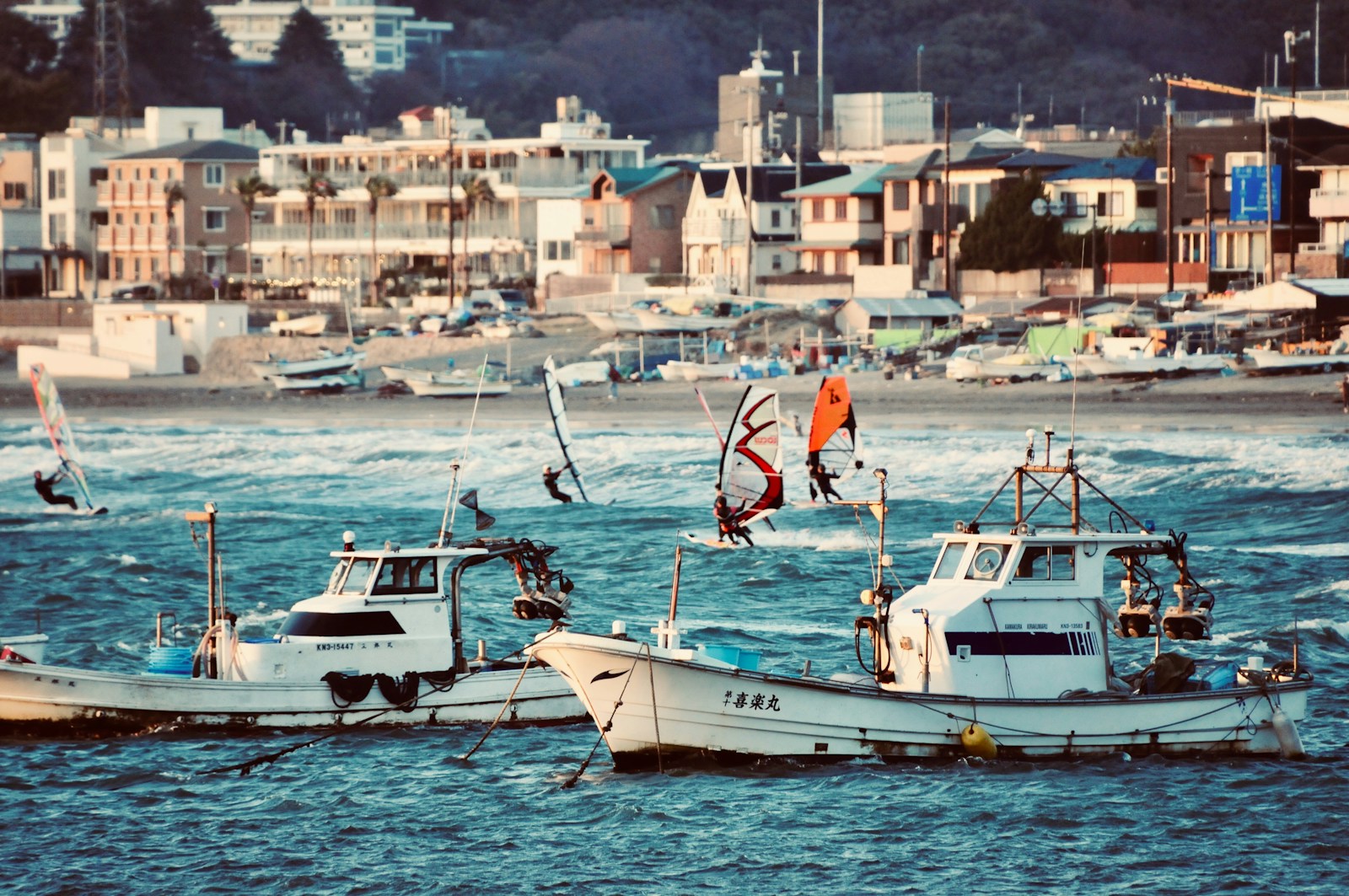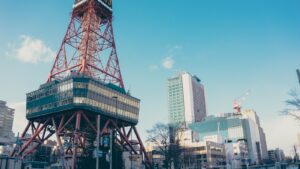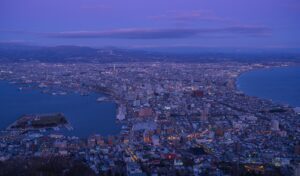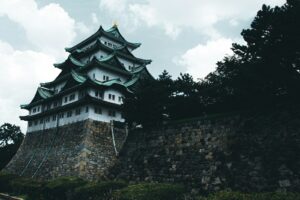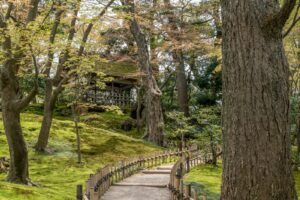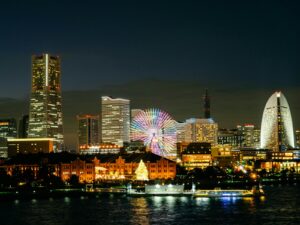Nestled along the coast of Kanagawa Prefecture, Kamakura is a historical gem that offers a rich tapestry of culture, history, and natural beauty. Once the political center of medieval Japan, today it stands as a serene escape, inviting travelers on a journey through time and beauty. Exploring Kamakura is to walk amidst ancient temples, iconic monuments, and breathtaking landscapes, offering an immersive experience into Japan’s storied past and vibrant present. This article embarks on a comprehensive exploration of Kamakura, unveiling the myriad facets that make this city a must-visit destination for any traveler seeking to uncover the heart and soul of ancient Japan.
Kamakura: A Timeless Beacon of Ancient Japan
Kamakura beckons with its serene landscape and historical grandeur, offering a glimpse into Japan’s rich feudal history. As you step into the city, the air fills with a sense of timelessness, transporting visitors back to an era where samurai warriors roamed the streets. The city, encased by lush mountains and the expansive sea, presents a picturesque setting that has captivated artists and poets for centuries. Kamakura’s architectural marvels, from its ancient temples to traditional residences, stand as a testament to the artistic and cultural sophistication of medieval Japan. It’s a place where history is not just studied but felt, through the quiet majesty of its surroundings and the enduring spirit of its people. The city continues to thrive as a cultural hub, where ancient traditions blend seamlessly with the rhythms of modern life.
Unveiling Kamakura’s Enigmatic Past: An Introduction
The origins of Kamakura are steeped in legend and lore, tracing back to a time when it was established as a stronghold by the Minamoto clan in the late 12th century. This marked the beginning of the Kamakura Shogunate, a pivotal era that shaped the course of Japanese history. The city’s strategic location, surrounded by natural fortifications, made it an ideal seat of power. Throughout the centuries, Kamakura has witnessed the rise and fall of warriors, the fervent devotion of pilgrims, and the silent prayers of monks. Its enigmatic past encompasses tales of valor, spirituality, and artistry, making the city a living museum of Japan’s feudal era. Visitors are invited to delve into this rich history, exploring ancient sites where the echoes of the past still resonate.
The Majestic Temples of Kamakura: A Spiritual Journey
Among Kamakura’s most revered treasures are its numerous temples, each with its own story and spiritual significance. The Zen temple of Kencho-ji offers a tranquil retreat, with its expansive grounds and serene atmosphere inviting meditation and contemplation. Engaku-ji, another Zen temple, stands as a monument to peace, commemorating the fallen warriors of the Mongol invasions. Tsurugaoka Hachimangu Shrine, dedicated to the patron deity of the Minamoto family, is a focal point of cultural and religious life in Kamakura. The temples of Kamakura are not just architectural wonders but are alive with the practices and rituals that have been passed down through generations. They serve as gateways to understanding the depth of Japanese spirituality and the pursuit of inner peace.
Kamakura’s Iconic Great Buddha: A Closer Look
No visit to Kamakura is complete without beholding the majestic Great Buddha (Daibutsu), a colossal bronze statue of Amida Buddha. This awe-inspiring monument, dating back to the 13th century, sits in the open air, having survived both time and natural disasters. The Great Buddha encapsulates the essence of Kamakura, symbolizing resilience, tranquility, and the enduring nature of faith. Visitors can even enter the statue to witness the remarkable craftsmanship from within. The surrounding gardens and the peaceful atmosphere make the Daibutsu a perfect spot for reflection and appreciation of the artistic and spiritual heritage of Kamakura.
The Samurai Legacy: Tracing Kamakura’s Warrior Path
Kamakura’s history is indelibly linked to the samurai, the elite warriors who governed Japan during the feudal era. The city’s samurai legacy is palpable, from the Kamakura Museum of National Treasures, which houses an impressive collection of samurai armor and weapons, to the numerous monuments and sites honoring legendary warriors. Walking through Kamakura’s historic districts, one can imagine the sound of clashing swords and the solemn oaths of loyalty. The samurai ethos, with its emphasis on honor, discipline, and mastery of martial arts, continues to influence Japanese culture and society. Kamakura offers a unique window into the world of the samurai, inviting visitors to explore the martial traditions and values that shaped Japan.
Delving into Komachi-dori: Kamakura’s Vibrant Heart
Komachi-dori Street is the vibrant heart of Kamakura, bustling with life and brimming with traditional charm. This lively shopping street offers everything from artisanal crafts to delectable street food, making it a paradise for souvenir hunters and food enthusiasts alike. The narrow alleyways branching off Komachi-dori are filled with quaint cafes, galleries, and boutiques, each offering a unique glimpse into Kamakura’s contemporary cultural scene. The fusion of traditional and modern is palpable, with ancient temples standing alongside modern establishments. Komachi-dori is not just a shopping destination but a cultural experience, embodying the spirit of Kamakura where past and present converge.
The Enoshima Excursion: Kamakura’s Seaside Gem
A short journey from the historical heart of Kamakura lies Enoshima, an enchanting island off the coast that offers breathtaking views and a rich tapestry of myth and legend. Connected to the mainland by a bridge, Enoshima invites exploration of its shrines, caves, and botanical gardens. The Enoshima Sea Candle, a lighthouse observation tower, offers panoramic views of the sea and Mount Fuji on clear days. Enoshima’s beaches are popular destinations during the summer, drawing visitors for sunbathing, surfing, and maritime festivities. The island’s seafood cuisine is a culinary delight, with local restaurants serving fresh catches of the day. Enoshima embodies the natural beauty and maritime spirit of Kamakura, providing a refreshing contrast to the historical explorations of the city.
Zen and the Art of Kamakura: Exploring Zen Temples
Kamakura is synonymous with Zen Buddhism, which has left an indelible mark on the city’s spiritual and cultural landscape. The Zen temples of Kamakura, such as Kencho-ji and Engaku-ji, are among the oldest and most significant in Japan, offering visitors a profound encounter with Zen teachings and practices. These temples are not only places of worship but also centers of learning, where the art of Zen meditation (zazen) is practiced. The serene environment, characterized by meticulously maintained gardens and ancient architecture, facilitates a deep connection with nature and oneself. Participating in zazen sessions provides a rare opportunity to experience the discipline and tranquility that define Zen. Exploring Kamakura’s Zen temples is a journey into the heart of Japanese spirituality, offering insights into a philosophy that emphasizes simplicity, mindfulness, and the beauty of the present moment.
Kamakura Through the Seasons: A Year-Round Paradise
Kamakura’s beauty transcends seasons, making it a captivating destination throughout the year. The cherry blossoms of spring paint the city in delicate shades of pink, creating a picturesque setting for hanami (flower viewing) celebrations. Summer brings the vibrant greenery of the hills and the festive atmosphere of traditional events like the Kamakura Festival. Autumn transforms the landscape into a tapestry of fiery reds and oranges, particularly in the temple gardens, where the changing leaves reflect the impermanence central to Buddhist teachings. Winter offers its own serene beauty, with snow-capped temples and the crisp sea air. Each season in Kamakura reveals a different facet of its charm, inviting visitors to experience the city’s natural beauty and cultural richness year-round.
Culinary Delights: Sampling Kamakura’s Local Cuisine
Kamakura’s culinary scene is a reflection of its rich cultural heritage and seaside location. The city offers a diverse palette of flavors, from traditional Japanese dishes to contemporary fusion cuisine. Local specialties include savory sablefish, sweet Kamakura vegetables, and the iconic shirasu (whitebait), which can be enjoyed in various forms, from fresh sashimi to delightful rice bowls. The vibrant Komachi-dori Street and its side alleys are culinary hotspots, where visitors can indulge in street food favorites like dango (rice dumplings) and matcha-flavored sweets. The tea houses and cafes scattered throughout the city offer a tranquil setting for enjoying Japanese tea and pastries. Sampling Kamakura’s local cuisine is not just about tasting the food but experiencing the city’s history, culture, and community through its flavors.
Navigating Kamakura: Tips for the Modern Traveler
Traveling through Kamakura is a journey of discovery, made accessible by the city’s efficient transport system and the warm hospitality of its people. The Enoden line, a charming local train, provides scenic views along the coast and easy access to major attractions. Bicycles are a popular way to explore the city’s hidden corners, offering the freedom to discover Kamakura at one’s own pace. For international visitors, the Kamakura Welcome Guide provides valuable information and tips to navigate the city. Staying in traditional guesthouses or modern accommodations allows travelers to immerse themselves in the local culture. With a little planning and an adventurous spirit, navigating Kamakura can be a seamless and enriching experience.
Beyond Time and Beauty: Kamakura’s Enduring Legacy
Kamakura is more than just a destination; it is a living legacy of Japan’s ancient past and a testament to the enduring beauty of its culture and traditions. The city invites not just a journey through its streets and temples but a deeper exploration of the human spirit. From the majesty of the Great Buddha and the serene beauty of the Zen temples to the vibrant energy of Komachi-dori, Kamakura embodies the timeless appeal of Japan. It is a place where history is not merely observed but felt, where every corner tells a story, and every moment is an opportunity for discovery. As travelers depart, they carry with them not just memories of scenic vistas and cultural treasures but a sense of connection to the enduring legacy of Kamakura.
Exploring Kamakura is an experience that transcends the ordinary, offering a journey through time and beauty that captivates the heart and enriches the soul. With its rich history, spiritual depth, and natural splendor, Kamakura stands as a beacon of Japan’s cultural heritage, inviting travelers from around the world to discover its timeless charm. Whether you seek the tranquility of ancient temples, the excitement of vibrant streets, or the simple beauty of nature, Kamakura awaits with open arms and endless discoveries.
